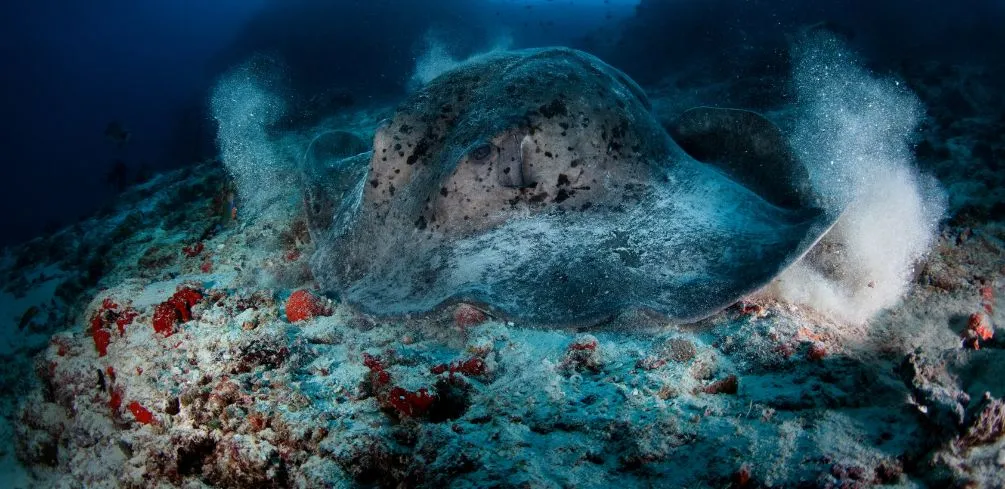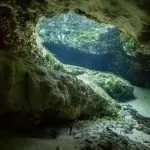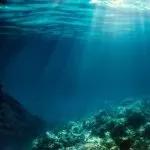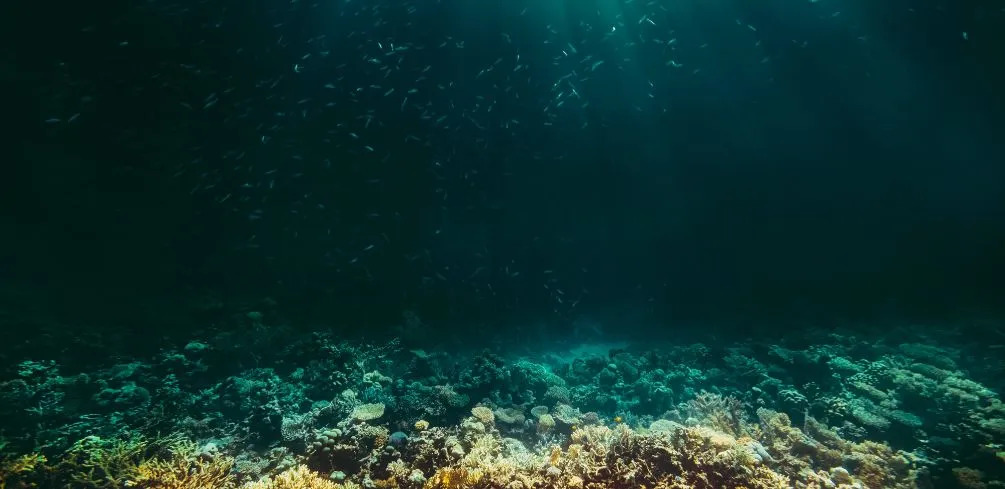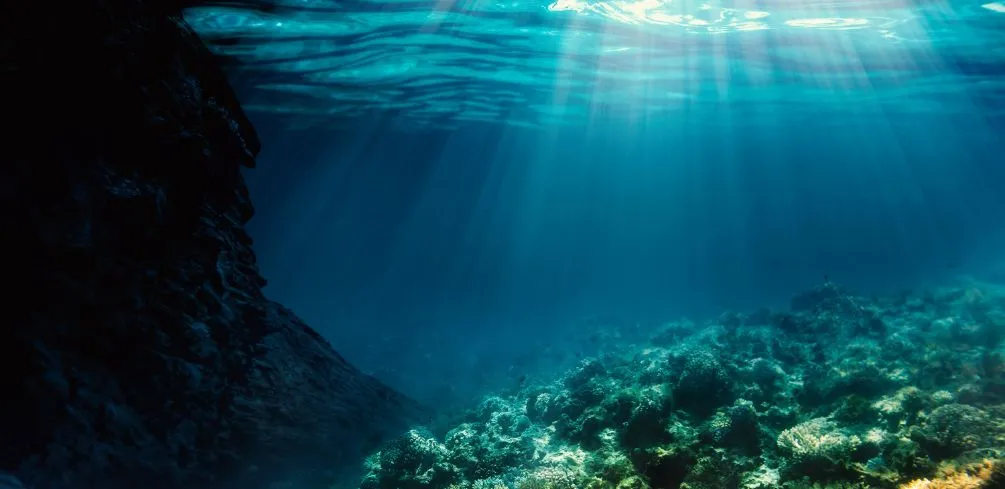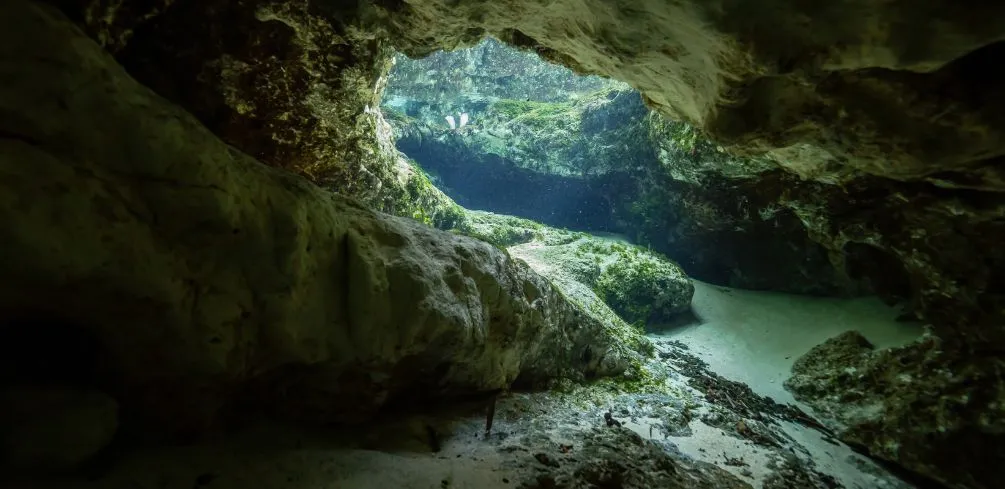Have you ever wondered what lies beneath the depths of the sea? We often think of coral reefs and shipwrecks when imagining what lies in the ocean’s depths, but have you ever considered submarine volcanoes?
Submarine volcanoes are unique and mysterious formations located far beneath the surface of the sea. They offer a glimpse into a world that few are privileged to see.
What makes these underwater mountains so special? Submarine volcanoes vary greatly in shape, size, and composition; some even contain active lava flows. These features create an environment for both rare species of animals and plants to thrive, making these landscapes truly unique.
In this article, we will explore the fascinating world of submarine volcanoes. From their origin to their role in ocean conservation, we uncover what makes them so captivating and mysterious. Join us as we dive into the unique landscapes of submarine volcanoes!
Definition Of Submarine Volcanoes
Submarine volcanoes are like hidden gems beneath the surface of the ocean, providing a unique and captivating glimpse of the Earth’s inner workings. It’s no wonder these deep-sea formations have become a source of fascination for scientists and explorers alike. So what exactly is a submarine volcano?
A submarine volcano is simply an undersea mountain that forms as molten rock erupts from a vent or fissure in the seafloor. These vents can vary in size, ranging from small cracks to huge craters.
As they erupt, they can spew out lava, ash, and other materials, which eventually form new land masses or islands on the sea floor. Submarine volcanoes are also known as “seamounts,” which are derived from their steep sides and large peaks that often protrude above sea level.
The most spectacular formations created by submarine volcanoes are hydrothermal vents – chimney-like structures that spew out hot water containing minerals such as iron and sulfur.
This hot water then mixes with cold seawater to form strange new ecosystems filled with fascinating creatures such as giant tube worms and shrimp-like animals called Pompeii worms. All this makes for some truly awe-inspiring sights that you won’t find anywhere else on Earth!
Formation Processes of Submarine Volcanoes
Having defined submarine volcanoes, I’d like to now focus on the fascinating formation processes behind them. Submarine volcanism is a type of volcanic activity that takes place beneath the surface of the ocean and can involve both explosive and effusive eruption styles.
The type of magma used in these eruptions depends on the depth at which they occur. For example, shallow water eruptions usually use basaltic magma, while deeper eruptions may use more silica-rich magma.
In addition to explosive and effusive eruptions, underwater volcanoes are also responsible for creating hydrothermal vents. These hydrothermal vents form when hot, mineral-rich fluids from deep below the Earth’s surface come into contact with cold seawater. The result of this interaction is a unique environment filled with bacteria and other organisms that have adapted to this extreme environment.
Submarine volcanoes are truly amazing phenomena; their formation processes help create some of the unique landscapes on Earth! From the deep sea environments created by hydrothermal vents to the explosive and effusive eruptions that take place beneath the waves, these processes provide us with an insight into how our planet works and continues to evolve over time.
Characteristics Of Submarine Volcanoes
Submarine volcanoes are like sleeping giants beneath the surface of the ocean – powerful and mysterious. There are many unique characteristics that make them distinct from other types of volcanoes.
The first characteristic of submarine volcanoes is that they form underwater, either near or on the seafloor. Compared to other types of volcanoes, these eruptions can be more explosive due to the higher water pressure, and their eruptions tend to be less visible than those above sea level. However, these eruptions can still cause significant damage to vessels and structures in their vicinity.
Submarine volcanic islands are often created during these eruptions as molten lava rises up and solidifies upon contact with cold seawater. These islands can provide a habitat for various marine life and also act as a barrier against strong waves and currents.
Plus, some submarine volcanoes also have hydrothermal vents, which release heated water containing minerals into the surrounding area – this is a major source of energy for deep-sea ecosystems.
We may never fully understand all the complexities of submarine volcanoes, but we can appreciate their mysterious beauty and vital role in maintaining balance within our oceans’ fragile ecosystems.
Types Of Features for Submarine Volcanoes
Here is a quick list of features:
• Hydrothermal vents
• Pillow basalts
• Seamounts
• Caldera collapse
• Submarine canyons
Submarine volcanoes come in all shapes and sizes, offering a variety of unique features. Hydrothermal vents, for instance, are found along mid-ocean ridges where water heated by molten magma rises to the surface.
These vents release gases that create billowing plumes of white smoke and provide a home to some of the most unusual creatures on earth. Pillow basalts, on the other hand, are formed when lava oozes out of seafloor fissures and cools rapidly in contact with seawater.
Seamounts are mountains that rise from the ocean floor, often with steep sides and flat summits caused by thousands of years of erosion. Caldera collapse is another fascinating feature created when the magma chamber below an island or seamount empties out and causes its surface to sink. Finally, submarine canyons are deep channels carved out by rivers flowing underwater over long periods of time.
These features all make up the incredible landscapes that exist beneath our oceans’ surfaces – offering us a glimpse into an alien world teeming with life. Each one is full of surprises that give us a greater understanding of how our planet works and why it’s so important to protect it.
Exploring these wonders can open up new worlds for us to marvel at and gain insight from as we continue to learn more about our oceans and their many secrets!
Exploring Submarine Volcanoes
Ah, the glory of exploring submarine volcanoes. I feel like a modern-day Christopher Columbus discovering new lands and marveling at their beauty.
Submarine volcanoes are some of nature’s most unique and enigmatic creations, hidden away in the deepest parts of our oceans. These mysterious deep sea giants provide an array of wonders for those who dare to explore them.
Submarine volcanoes are formed from the same volcanic activity that occurs on land, with lava flows slowly forming large structures beneath the ocean’s surface. What makes these structures so amazing is how they contrast with their surroundings. In a world of darkness and quiet, these vast mountains rise up and create a spectacular landscape unlike anything else on Earth.
Exploring submarine volcanoes requires specialized equipment and training, making it an adventure that not many people get to experience firsthand. But for those who do take part in such an exploration, it can be a life-changing event filled with memories that will last forever. From breathtaking views to fascinating wildlife, there is no shortage of incredible sights to behold when exploring submarine volcanoes.
The next time you find yourself looking for something new and exciting to do, consider taking a journey into the depths of our oceans to explore submarine volcanoes! You won’t regret it!
Frequently Asked Questions
How Common Are Submarine Volcanoes?
Submarine volcanoes are an intriguing and mysterious natural phenomenon. They occur beneath the surface of the ocean and can be found in many different locations around the world.
The frequency at which they occur is quite remarkable, as there are thousands of them located throughout the ocean floor. Knowing this, it begs the question: how common are submarine volcanoes?
To begin answering this question, let’s look at some of their characteristics. Submarine volcanoes have a wide range of shapes and sizes and can be either active or inactive. They can form long chains located along tectonic plates or can appear as single eruptions from deep within the sea. Additionally, submarine volcanoes tend to be more volatile than those on land due to their proximity to magma chambers.
Given their fascinating nature, it is no surprise that submarine volcanoes have been studied extensively by scientists over the years. Through this research, we now know that there are thousands of submarine volcano sites spread throughout the oceans, making them relatively common occurrences compared to their land-based counterparts.
Furthermore, with advances in technology allowing us to explore deeper into our oceans every day, we continue to discover more about these unique structures and learn new insights into their fascinating geology.
Submarine volcanoes remain a great source of wonderment and scientific study for researchers around the world. With each passing day, we gain more knowledge about these captivating geological formations and further our understanding of our planet’s marine ecosystems.
What Are The Environmental Impacts Of Submarine Volcanoes?
Submarine volcanoes are an interesting and unique phenomenon that has been around since the dawn of time. However, with an increasing exploration of the depths of our oceans comes a better understanding of their environmental impacts. When it comes to submarine volcanoes, it’s important to understand not only their beauty but also their potential ecological risks.
Volcanic eruptions can have devastating effects on marine life, especially when they occur in an already fragile environment such as the deep sea. The eruption itself can create plumes of ash and steam that can affect populations of fish, coral reefs, and other species living in the vicinity.
Furthermore, volcanic eruptions from submarine volcanoes can lead to large-scale changes in ocean temperature and acidity levels, which can cause further disruption to surround ecosystems.
When looking at the overall picture, it’s clear that understanding how submarine volcanoes operate and how their eruptions affect the environment is essential for maintaining biodiversity and healthy marine ecosystems.
While there may be some debate over the specifics, one thing is certain: we must learn more about these fascinating geological structures and how their eruption impacts marine life if we want to ensure a sustainable future for our planet’s oceans.
What Kind Of Research Is Being Done On Submarine Volcanoes?
When it comes to an understanding the world around us, research is often the key. This is especially true when it comes to submarine volcanoes, as there are still many unanswered questions. What kind of research is being done on submarine volcanoes?
Let’s look at the various ways in which volcanic research submarines can provide insight into their environment, marine life, and the potential impacts of submarine volcanic eruptions.
One of the primary focuses of research on submarine volcanoes is understanding their unique environment in greater detail. Scientists use a variety of methods, such as deep-sea submersibles, seismic surveys, and remote sensing, to investigate these environments and uncover new information about them. By studying how these features interact with each other, researchers can gain an even deeper understanding of how they influence the surrounding marine life and ecosystem.
Another important area that scientists are exploring when researching submarine volcanoes is the potential impacts of volcanic eruptions on nearby areas. With better data collection and analysis techniques, researchers can monitor for changes in water chemistry, seismic activity, gas emissions, and other indicators that may be linked to an impending eruption.
Additionally, by studying previous eruptions scientists can gain a better understanding of what kind of effects they may have on marine life or coastal communities if one were to occur today.
Overall, studying submarine volcanoes provides valuable insight into their environment and helps us understand how they impact our planet’s delicate ecosystem. By unlocking the mysteries behind these amazing features, we can continue to learn more about our world and prepare for any potential hazards that may arise from them in the future.
How Do Marine Life Interact With Submarine Volcanoes?
We all know about volcanoes, but what about submarine volcanoes? How does marine life interact with these unique landscapes? This question is an important one as it has implications for the health and stability of our planet’s ecosystems.
When it comes to submarine volcanoes, marine life has a unique relationship with them. They provide habitats and resources that other areas may not have, such as food or shelter.
These habitats can be incredibly biodiverse, bringing in a range of new species to explore the surroundings. In addition, some deep-sea creatures are specially adapted to survive in the intense heat and pressure of a volcanic environment.
The interaction between marine life and submarine volcanoes is not just important for the creatures themselves; it also affects the entire ecosystem. For example, if there are more organisms living near a volcano, then there will be more nutrients available for other species further away from the source.
Therefore, understanding how marine life interacts with submarine volcanoes can help us protect our planet’s natural environments for future generations to enjoy.
As we can see, studying how marine life interacts with submarine volcanoes can teach us a lot about both their individual behavior and how they impact their surrounding ecosystems. By learning more about this relationship, we can better understand our planet’s biodiversity and ensure that these unique landscapes remain healthy for years to come.
How Often Do Submarine Volcanoes Erupt?
Have you ever wondered how often submarine volcanoes erupt? Submarine eruptions are difficult to observe and measure, making it challenging to determine the exact frequency. However, research has shown that volcanic activity underwater can be more frequent than previously thought. Let’s discuss the frequency of underwater eruptions and the implications of submarine volcanism.
Submarine eruption frequency is largely influenced by the type of volcano and its location. For example, mid-ocean ridges tend to have deeper oceanic crusts and therefore tend to have more frequent eruptions than other types of submarine volcanoes.
On the other hand, seamounts typically have shallower oceanic crusts and may experience a slower rate of volcanic activity. Additionally, some areas are known for their high levels of seismic activity, resulting in more frequent eruptions compared to less seismically active regions.
The frequency of submarine eruptions also depends on a variety of other factors, such as seafloor spreading rates, tectonic plate movements, and magma supply from the Earth’s mantle. All these factors can contribute to changes in eruption frequency over time or even sudden outbursts that could cause catastrophic events like tsunamis or massive landslides.
The impacts of submarine volcanism can be felt far away from the source, so it is important to understand these phenomena in order to protect coastal communities from potential disasters.
Research into submarine eruption frequency is still ongoing, with many questions yet unanswered. Advances in technology are helping scientists study this phenomenon in more detail than ever before, so hopefully, we will soon learn more about how often these unique landscapes erupt beneath the waves!
Conclusion
Our exploration of submarine volcanoes has been truly eye-opening. From learning about their environmental impacts to understanding how they interact with the marine life around them, there is no doubt that these unique geological sites are incredible and fascinating.
Even more exciting is the research being conducted on them, giving us a window into what lies beneath the depths of our oceans.
Submarine volcanoes are a reminder of the power of nature and its ability to create beautiful and often unpredictable landscapes. When you consider that many of these volcanoes lie dormant for years before suddenly erupting, it’s easy to appreciate their mysterious nature.
The next time you go for a swim, take a moment to think about the amazing submarine volcanoes below you and all the wonderful secrets they may hold beneath the surface. With every wave crashing against the shore, we can be thankful that we have this opportunity to explore and learn about such an incredible phenomenon!
